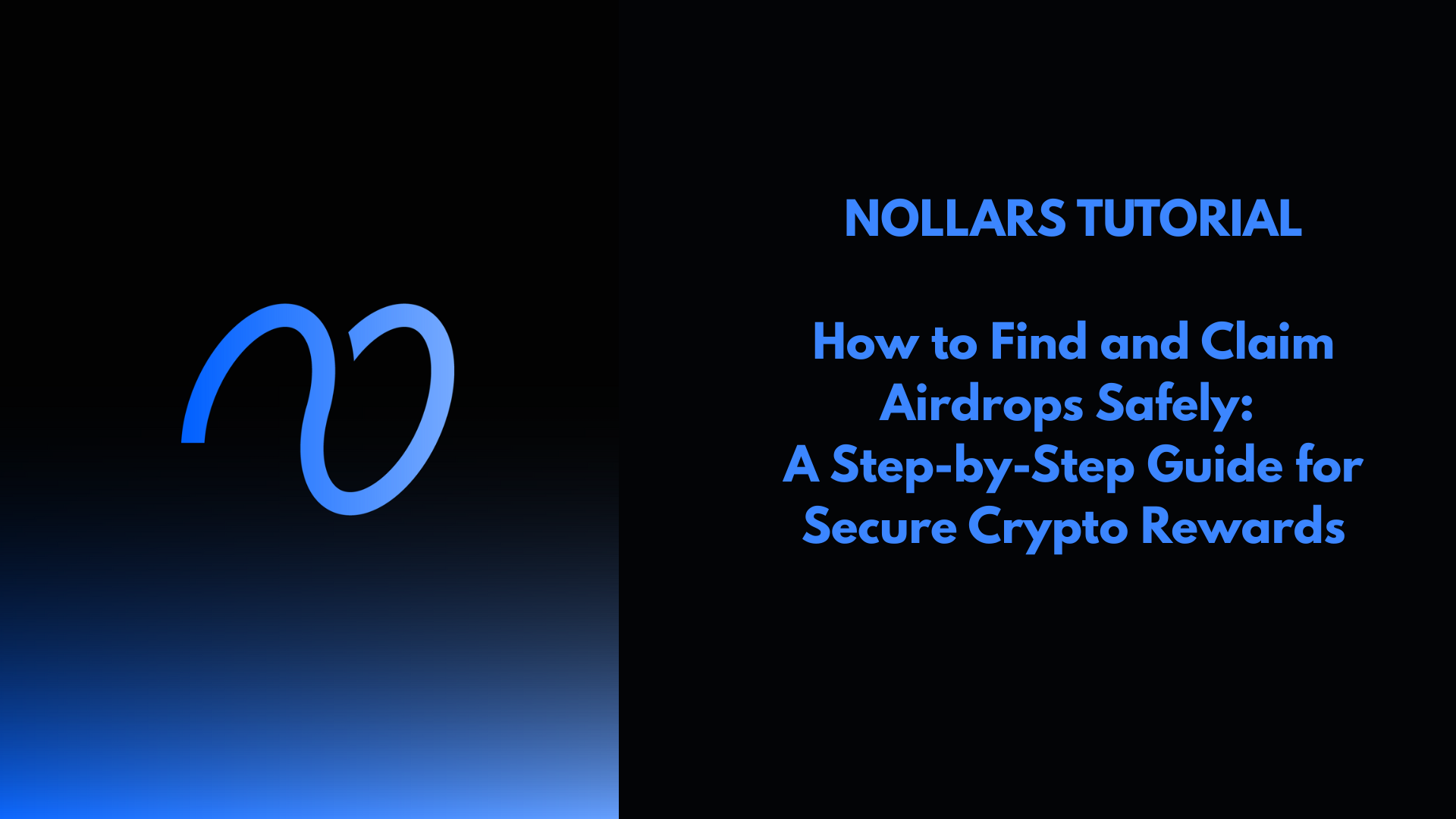Finding and claiming airdrops can be a surprisingly easy way to get free tokens and rewards in the crypto world.
If you want to do this safely, you’ve got to follow official project announcements, stick to trusted airdrop tracking sites, and never share private keys or sensitive info. That’s the best way to dodge scams that are out to steal your funds or data.

Most airdrops show up first on social media or through reputable platforms. Staying plugged in is pretty important if you want to catch them.
Tools like MetaMask Portfolio or sites like Earnifi make it much easier to find and claim legitimate airdrops without too much hassle.
Understanding Airdrops
Airdrops basically mean someone’s sending free tokens or coins straight to users’ wallets.
Each event varies in type, purpose, and whatever conditions you need to meet to get in. Knowing these details helps you spot legit offers and claim tokens securely.
Types of Airdrops
Airdrops usually fall into a few categories:
- Standard Airdrop: Tokens just show up automatically if you already hold a specific crypto.
- Claimable Airdrop: You have to claim the tokens yourself, usually on a website or app.
- Exclusive Airdrop: Only community members or early supporters get these.
- Bounty Airdrop: You do stuff like share posts or join groups to qualify.
Each type comes with its own process and, honestly, its own risks.
Claimable airdrops, for example, might make you pay gas fees. If you know the types, you’re way less likely to get scammed.
Why Projects Offer Airdrops
Projects typically use airdrops to:
- Promote Awareness: Free tokens get people talking about new or little-known cryptos.
- Distribute Tokens: Airdrops help spread tokens out to more users.
- Reward Loyalty: They give something back to early community members or users.
- Encourage Network Growth: These events can boost trading and attract new investors.
Free tokens create buzz and sometimes even drive up a token’s value if enough people actually use them.
Common Airdrop Requirements
To qualify for an airdrop, you usually need to meet a few basic conditions:
- Hold a certain crypto in your wallet by a set date.
- Register with your email or social handle.
- Join official groups like Telegram or Discord.
- Do stuff like retweet or refer friends.
Always check the requirements on official project channels. Scams love to copy real airdrops, so don’t give out your private keys or pay steep fees.
Real airdrops never ask for sensitive info or upfront payments.
For more tips, check out how to claim airdrops and NFTs easily in MetaMask Portfolio.
How to Find Legitimate Airdrops
If you want to find real airdrops, you’ve got to pay close attention to where the info comes from and how trustworthy the project is.
It’s also about monitoring official channels to catch announcements early and, hopefully, avoid scams.
Identifying Reputable Sources
Always start with verified and trusted platforms.
Sites that specialize in listing verified airdrops are a solid bet. Look for platforms with a decent track record lots of accurate updates, not many scams.
Official project sites and established crypto news outlets are usually safe. Try to avoid random forums or sketchy social posts where details might be off.
Dedicated airdrop aggregators can help weed out the fakes.
Tips for finding reputable sources:
- Use sites with verified airdrop lists
- Favor official project announcements
- Make sure the platform has clear contact info
- Steer clear of suspicious links or anyone asking for private keys
If you stick to these, you’ll drastically reduce your chances of getting caught in a scam.
Evaluating Project Credibility
Airdrop legitimacy almost always depends on the project’s credibility.
Before you jump in, research the project’s history, team, and what people are saying about it.
Look for an active team, transparent goals, and clear tokenomics. Projects with a strong community or reputable partners are usually safer bets.
Be wary if a project promises crazy-high returns or asks for sensitive info like private keys. If the project’s been around for a while and passed audits, that’s a good sign.
Monitoring Social Channels
Most legit projects announce airdrops on their official social media and community forums.
Following these means you get news directly (and early).
Watch Twitter, Telegram, Discord, and Reddit for official updates. Check for verification badges or links from the main site to make sure the account’s real.
Getting involved in the community can tip you off to upcoming airdrops and help you spot scams. Staying active helps you stay ahead.
Want more ways to find and verify airdrops? Here’s a crypto airdrops list May 2025.
How to Claim Airdrops Safely
Claiming airdrops isn’t rocket science, but you do need to take some steps to protect your assets and info.
Focus on keeping your private keys safe, recognizing scams, picking reliable wallets, and confirming announcements from trusted sources.
Protecting Your Private Keys
Private keys are your wallet’s crown jewels—they control your funds and airdrop tokens.
Never share your private keys or seed phrases, and don’t enter them on random websites.
Use hardware wallets or secure software wallets that keep keys offline or encrypted. If you’re connecting your wallet to claim an airdrop, don’t sign transactions that ask for full control unless you’re sure it’s safe.
Back up your private keys offline in a secure spot. Lose them, and you lose access to everything. No joke.
Avoiding Phishing Attempts
Phishing scams are everywhere. They’ll try to trick you into giving up wallet details or signing shady transactions.
Be cautious with links, unexpected messages, or sites pretending to be official.
Double-check URLs and avoid clicking on links from unknown emails or DMs. Stick to verified official channels for airdrop info and claims.
Fake sites often have bad design, typos, or no SSL (https://). If you’re not sure, search forums or trusted sites for scam reports.
Don’t sign anything unless you’re 100% confident it’s legit—signing can expose your wallet to theft.
Using Trusted Wallets
Pick a wallet people trust. MetaMask, Trust Wallet, or hardware wallets are all good choices for secure airdrop claiming.
Keep your wallet software up to date to patch any holes. Wallets with open-source code and strong community reviews are usually the safest.
Avoid web wallets or apps from unknown developers. Make sure your wallet supports the token and network before you claim—otherwise, you could lose tokens.
Turn on extra security like two-factor authentication (2FA) if it’s available.
Verifying Official Announcements
Stick to official project announcements for airdrop info.
Only trust verified channels like the project’s website, Twitter, Discord, or Telegram.
Look for consistent announcements across several official places before you do anything. Scammers love to post fake news on forums or unofficial accounts.
Airdrop aggregators or well-known sites that gather official info help you stay current. Always check the details—time, token, claiming steps—against what the project says.
Skipping this step? That’s how people get scammed.
For more on claiming airdrops safely, see airdrops.io.
Managing and Securing Airdrop Rewards
Managing airdrop rewards means keeping your tokens safe and knowing what taxes might come into play.
If you handle your tokens carefully, you’re less likely to lose access or get in trouble with the law.
Safely Storing Airdropped Tokens
Store your airdropped tokens in wallets that actually support them.
Hardware wallets or reputable software wallets with strong security features are best for keeping hackers out.
Don’t share private keys or seed phrases—ever. Turning on 2FA for exchanges or wallets adds another layer of protection.
Keep your wallet software updated. Back up your recovery phrases somewhere safe and offline, so you don’t lose everything if your device fails.
Understanding Tax Implications
Airdropped tokens usually count as taxable income the moment you get them. The value on claim day sets what you’ll need to report.
If you sell or swap the tokens later, you’ll need to figure out any capital gains or losses based on the difference between what you got them for and what you sold them for.
Tax rules depend on where you live, so talk to an accountant or tax pro who knows crypto. Keep good records—dates, values, transactions—to make tax reporting a lot less painful.
Frequently Asked Questions

Claiming airdrops means following the right steps and double-checking everything.
It’s worth using trusted sources and tools to spot real opportunities and keep your wallet secure.
What are the steps to claim an airdrop on a platform like MetaMask?
First, connect your MetaMask wallet to the platform offering the airdrop.
Check the “Explore” page or use built-in tools to find available airdrops. If you’re eligible, claim tokens through the wallet or the platform’s claim button.
Tokens might show up automatically, but sometimes you’ll have to approve a transfer in MetaMask.
How can I check the legitimacy of an airdrop before claiming it?
Verify announcements on official project sites and real social media accounts. Using reputable airdrop tracking sites helps you steer clear of scams.
Never share private keys or sensitive wallet info—no matter what.
Where can I find a list of upcoming airdrops for cryptos in 2025?
Track upcoming airdrops on dedicated platforms that aggregate this stuff. Joining crypto communities and watching official announcements helps too.
Sites like airdrops.io post timely, reliable lists.
What methods are recommended for identifying the most valuable crypto airdrops?
Get in early on new token launches and keep tabs on projects with active teams and lively communities.
Use established airdrop aggregators that actually rate projects to help you decide which claims are worth your time.
Can I claim airdrops instantaneously, and what should I be cautious about?
Some airdrops show up instantly if your wallet’s integrated; others make you complete tasks or wait for distribution.
Avoid clicking unknown links, giving out private keys, or installing sketchy software—those are classic ways to get your crypto stolen.
What are the best practices for securing my crypto wallet during an airdrop claim process?
I always stick with wallets that offer strong security features—MetaMask comes to mind right away.
Don’t ever share your private keys or seed phrases, no matter how legit something seems.
Turn on two-factor authentication for any accounts linked to your wallet. Before you confirm any claims, double-check the permissions you’re giving to dApps.
Keep your wallet software updated. That way, you’re less likely to get caught off guard by new vulnerabilities.




